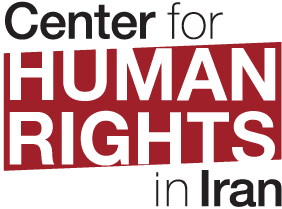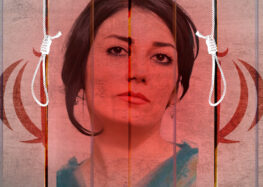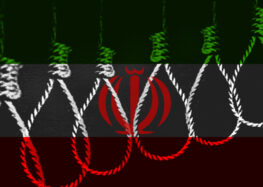Atrocities Against Girls in Iran Must Be Addressed as World Marks Day of the Girl Child
 Child Marriage and Lack of Protection from Violence Threaten Iranian Girls’ Future
Child Marriage and Lack of Protection from Violence Threaten Iranian Girls’ Future
October 10, 2024 – On this International Day of the Girl Child, the widespread atrocities committed against girls in the Islamic Republic of Iran—which include pervasive child marriage, a lack of protection against domestic violence, and the state’s lethal assaults on peacefully protesting schoolgirls—demand global attention.
“Ten-year-old girls are married off, child brides who flee are killed by male relatives who receive lenient sentences, and schoolgirls are shot, detained, and tortured by state security forces for peacefully protesting mandatory hijab laws,” said Hadi Ghaemi, executive director of the Center for Human Rights in Iran (CHRI).
“This is the reality of life for girls in the Islamic Republic, and the world cannot look the other way while such atrocities are committed,” Ghaemi said.
The theme of 2024’s International Day of the Girl Child is girls’ “vision for the future,” but the future of the 12 million girls in Iran includes:
- Marriage allowed for girls at age 13, younger with permission of father and judge
- Abused child brides who flee face honor killings and often commit suicide
- Lenient legal punishments for family members who commit honor killings
- No protection for girls against sexual abuse in Iranian law
- Schoolgirls protesting during “Woman, Life, Freedom” uprising shot, arrested, and tortured
The State Crackdown on Girl Protesters
In addition to Iran’s discriminatory laws and practices against girls in Iran, during the “Woman, Life, Freedom” uprising young schoolgirls played a pivotal role in the peaceful anti-government protests that erupted across Iran in 2022, and were met with a violent state response. Hundreds of children, some as young as 10, including girls, were arrested and held in detention facilities alongside adults, while others were sent to juvenile detention centers or mental health facilities, according to the UN Fact-Finding Mission on Iran. Many were abused and tortured in state custody.
Girls at schools across Iran were also targets of widespread poisoning attacks, which were never properly investigated by the government and affected thousands of schoolchildren for their involvement in the protests or for defying the mandatory hijab laws.
Child Marriage and Abuse Suffered by Child Brides
The National Statistical Center of Iran has stopped publishing information on child marriages and births, obscuring the ongoing crisis, but the latest available data shows that between the winter of 2021 and 2022, at least 27,448 registered marriages of girls under the age of 15 were recorded, along with 1,085 cases of childbirth within this age group. The real number of child marriages in Iran is much higher, as many are not registered. Child marriage is allowed at age 13 for girls (and younger with the consent of the father and a judge) and 15 for boys.
Zahra Rahimi, co-founder of the Imam Ali Popular Students Relief Society, an NGO in Iran focused on poverty reduction that was forcibly shuttered by the government, told CHRI that when deciding to let a girl younger than 13 marry, “the judge will ask questions such as, ‘What is the price of meat? If you want to buy something for your home, what do you buy?’ and based on the girl’s answers will determine whether she is ready for marriage. In this process, there is no lawyer, psychologist, doctor, expert or trusted person to talk to the child.”
Rahimi also noted that “where the court did not allow marriages to take place [for example, when the girls were under 9 years old], the girls were sent into ‘temporary marriages’ until they turned 13, and then their marriage would become legal.”
Rahimi added that for girls who do not have a birth certificate (often girls from Afghanistan or from underprivileged and marginalized communities), there are no accurate statistics. In many other cases, there is no court process or legal registration of marriage; families only recite a verse from the Quran to seal a marriage contract.
Early marriage exposes girls to marital rape, domestic violence, exploitation, and serious health issues stemming from early childbearing. Young girls are often victims of femicide and honor killings, and many child brides resort to suicide.
Child marriage also significantly increases the likelihood of girls dropping out of school. In 2024, nearly 930,000 children reportedly dropped out of school in Iran, and in the previous academic year, 439,805 girls accounted for nearly 50% of all students who dropped out. One primary reason for the rising dropout rate among girls is early marriage.
In addition, Iran’s laws leave girls deeply unprotected from physical and sexual abuse, weak and poorly enforced labor regulations result in millions of girls in the workforce, and the age of criminal responsibility in Iran is 9 for girls and 15 for boys, despite international law that defines anyone under age 18 as a child.
“The girls of Iran deserve to live free from violence and pursue their dreams,” Ghaemi said. “The international community must take a stand against the Iranian government’s severe and systematic abuse of girls’ rights; when girls are empowered, they can transform their communities.”
This report was made possible from donations by readers like you. Help us continue our mission by making a tax-deductible donation.






